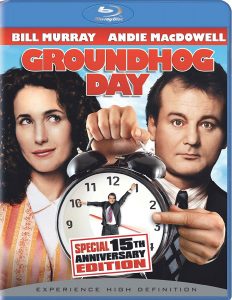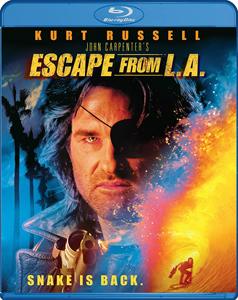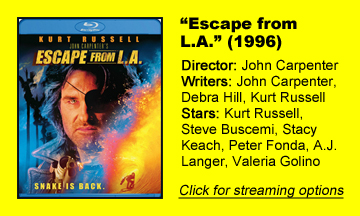“Escape from L.A.” (1996), although set in the future of 2013, looks awfully familiar to those of us living in the real 2020. Nationalism and religion have merged, the police are nationalized and indistinguishable from the military, people found morally lacking are deported to a hellhole on the other side of a wall, everyone is distracted from their problems by gadgets, Snake Plissken (Kurt Russell) has a virus, and it’s unclear if one of his allies (Pam Grier’s Hershe) is a man or woman.
Brazenly satirical
When I saw this movie in theaters, I was stunned at the brazenness with which director/co-writer John Carpenter copies his classic “Escape from New York” (1981). But on this viewing, I have to say “L.A.” offers enough new things to be worth watching. “New York” is the grittier and obviously more original film, but “L.A.” is a more brazenly satirical look at the looming issues of 21st century America.
Granted, it cuts and pastes too much (the “Call me Plissken” punchline is repeated), but it also improves on some things. In the original, we hear over a loudspeaker that convicted criminals have the option of execution rather than exile; here, we see people being electrocuted to death in the hallway of the deportation center.
In details like this, Carpenter – joined by Russell and longtime collaborator Debra Hill on the screenplay – is punching up his original work.
Yet the special effects look worse this time, even though this is 15 years later with a bigger budget. The film retains the problem of being stuck in its filmmaking time, through both the cheap effects and the soundtrack’s mid-’90s anger rock.
Somehow angrier
Indeed, Plissken is somehow angrier this time. He’s a parody of his “New York” character, who was beat down by the world recently enough to still be miffed by it (“How about a little human compassion?”). Now, he flat-out doesn’t care anymore.
Most of his dialog consists of post-cynical one-liners (“What are you doing in L.A.?” “Dying.”). And his final act in the movie is to do the one thing the government hasn’t done itself: Shut down the world’s power grid, completing humanity’s journey back to the Stone Age.
The supporting cast has flavor but doesn’t get to fully exercise it. Most wasted is “My So-Called Life’s” A.J. Langer as the president’s daughter, Utopia. She kicks off the plot by defecting from her dad and the USA, taking the EMP weapon to L.A. and teaming up with island boss Cuervo Jones (Georges Corraface).
We’re told she’s addicted to virtual reality. Initially an intriguing mix of flighty and revolutionary, Utopia is reduced to a plot object.
Steve Buscemi adds the color you’d expect as Map to the Stars Eddie, and Grier’s transgender outlaw boss was probably edgier in 1996 than today. The best L.A. parody comes when Snake is captured by the Surgeon General of Beverly Hills (Bruce Campbell), whose henchpeople are Hollywood types with botched plastic surgery.

This sequence goes by quickly, as does the appearance of Taslima (Valeria Golino, the “Hot Shots!” films), a South Dakotan who has been banished to L.A. for being a Muslim. She would be a love interest, except Snake doesn’t feel anything for anyone anymore.
Embarrassing special effects
The action scenes often look bad, but they are conceptually creative and kind of fun. An atrocious CGI shot finds Snake’s submersible blasting through a now-underwater L.A. skyscraper on his way to the island.
The latest mini-quake triggers a tidal wave, which Snake surfs through a canal before jumping onto the back of Eddie’s car. The green-screen work is abundantly noticeable. Since the movie is so cheesy anyway, it’s not that big of a deal.
Indeed, the surf sequence comes after a dramatic basketball challenge in the L.A. Coliseum where Snake must make five baskets (at alternating ends), given 10 seconds each time.
There’s no question “Escape from L.A.” could’ve been better if Carpenter and company beefed up the characters and spent more money on special effects. But it’s nice to get a second Snake Plissken adventure, and I have to admit the movie has aged well as a satire of the direction the country was headed in in 1996, which it since reached – at least in broad strokes.
It still plays as satire, but now just barely. We won’t get a third Plissken film, and not just because Carpenter has retired and Russell has aged out of the role. Sadly, America reflects too much genuine dystopia now to make humorous fiction out of it.


